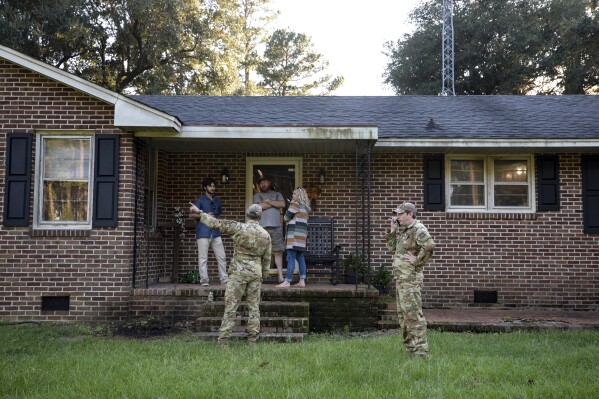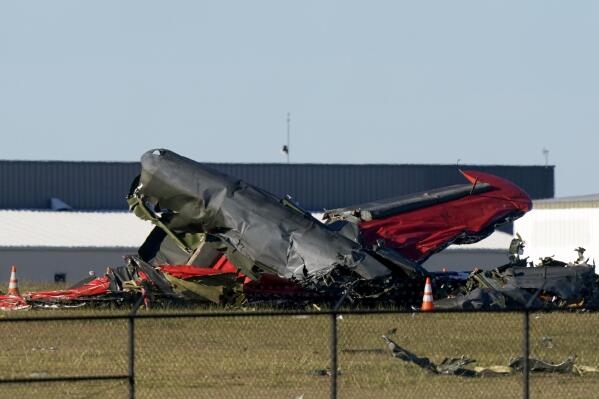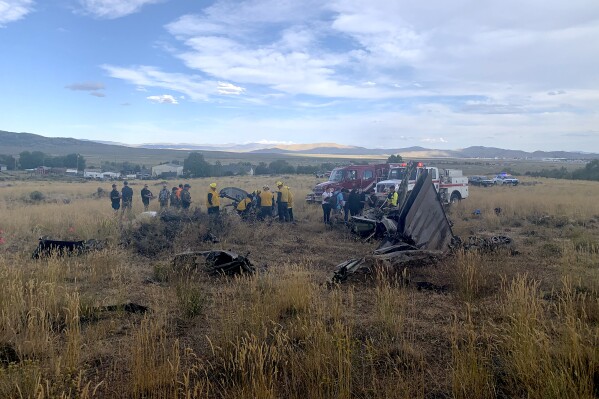Marines say F-35 feature to protect pilot could explain why it flew 60 miles on its own
WASHINGTON (AP) — A feature on fighter jets meant to protect pilots in an emergency could explain how an F-35 managed to fly 60 miles (100 kilometers) after its pilot bailed out before crashing in a rural area in South Carolina, the U.S. Marine Corps said Thursday.
The advanced fighter jet crashed Sunday after a malfunction prompted the pilot to eject over Charleston and land in a residential backyard not far from Charleston International Airport. The plane, which was at an altitude of only about 1,000 feet (300 meters), kept flying until it crashed near Indiantown. It took more than a day to locate the wreckage.
The Marines said it was unclear why the jet kept flying but that flight control software would have worked to keep it steady if there were no longer a pilot’s hands on the controls.
“If the jet is stable in level flight, the jet will attempt to stay there. If it was in an established climb or descent, the jet will maintain a 1G state in that climb or descent until commanded to do something else,” the Marine Corps said in a statement. “This is designed to save our pilots if they are incapacitated or lose situational awareness.”
 Pilot of downed F-35 stealth fighter jet parachuted into residential backyard, official says
Pilot of downed F-35 stealth fighter jet parachuted into residential backyard, official says
 A look at recent vintage aircraft crashes following a deadly collision at the Reno Air Races
A look at recent vintage aircraft crashes following a deadly collision at the Reno Air Races
 Pilots racing in WWII-era planes die in midair collision shortly after first-second finish in Reno
Pilots racing in WWII-era planes die in midair collision shortly after first-second finish in Reno
Other questions about the crash remained, too, notably why the plane wasn’t tracked as it continued flying over South Carolina and how it could take more than a day to find a massive fighter jet that had flown over populated, although rural, areas.
The Marines said features that erase a jet’s secure communications in case of an ejection — a feature designed to protect both the pilot’s location and the plane’s classified systems — may also have complicated efforts to find it.
“Normally, aircraft are tracked via radar and transponder codes,” the Marines said. “Upon pilot ejection, the aircraft is designed to erase (or ‘zeroize’) all secure communication.”
The plane would have kept broadcasting an identifier on an open channel to identify itself as friend or foe — but even on an unclassified communications channel air traffic control may not have been able to pick up the signal depending on how powerful its radar was, the weather at the time, how high the plane was flying and the terrain, the Marines said. They said thunderstorms and low cloud ceilings further hampered the search for the plane.
“When coupled with the F-35’s stealth capabilities, tracking the jet had to be done through non-traditional means,” the service said in its statement.
The pilot, who parachuted into a residential backyard and was not seriously injured , was described as an an experienced Marine Corps aviator with decades of experience in the cockpit.
The incident is still under investigation and results from an official review board could take months.
However, the Marines said the feature that kept the plane flying may not only have saved the life of the pilot but of others on the ground.
“The good news is it appeared to work as advertised. The other bit of silver lining in this case is that through the F-35 flying away it avoided crashing into a densely populated area surrounding the airport, and fortunately crashed into an empty field and forested area,” the statement said.
Disclaimer: The copyright of this article belongs to the original author. Reposting this article is solely for the purpose of information dissemination and does not constitute any investment advice. If there is any infringement, please contact us immediately. We will make corrections or deletions as necessary. Thank you.






